
Non-fungible Tokens, NFTs for short, are a relatively new technology even for the cryptocurrency industry. It is primarily used in applications where assets don’t need to be divided into equal parts and are suitable for asset classes where every item is unique.
The most common application is for art, where every piece is unique despite coming from a common team or artist. This technology has taken off initially with art collections looking to build communities in the NFT bull run of 2021-2022. The most famous is the Bored Ape Yacht Club, which managed to capture the imagination of celebrities like Snoop Dogg and Justin Bieber.
Let’s explore the two major types of NFT technology in existence today.
Do you know? NFTs can also be made refundable using another standard called ERC-5507.
Table of Contents
Overview of ERC-721
There are two major types of NFTs. ERC-721 is the most common type, first popularized as a technology for creating art collections such as the Bored Ape Yacht Club, Doodles, CloneX, and many others. ERC-721 treats each asset as a unique, standalone item within the collection. Meaning, that no two items in the collection are the same.
Pokemon is a good example of a product that would be like an analogy for ERC-721 NFTs. Each Pokemon is a part of the Pokemon franchise and would live on one ERC-721 contract as a collection. Then, each Pokemon would have its unique token ID. No two token IDs would be the same, and no two Pokemon would be the same. Each one is uniquely a Pokemon and is part of the Pokemon collection.
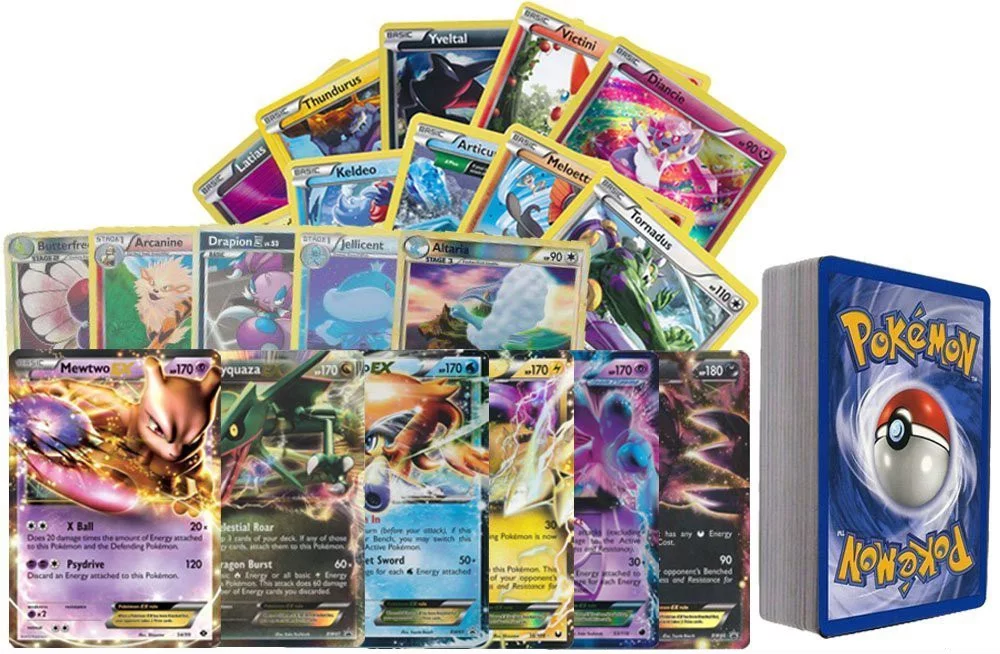
In an ERC-721 contract, the major data stored are the token ID and the associated artwork or asset to the token ID. This association is called the tokenURI, short for Universal Resource Identifier. A tokenURI could be a URL that points to an image, like a JPEG or PNG, or could be a video link, or folder on a server or website. Anything hosted on the web can be tied to a tokenURI, which then becomes the unique asset tied to the token ID.
Given this design, ERC-721 sees criticism around its claim to be decentralized. For example, the Cool Cats NFT contract is 0x1A92f7381B9F03921564a437210bB9396471050C and each tokenID has a tokenURI tied to a URL that looks like “https://api.coolcatsnft.com/cat/69”. The ending “69” of the URL represents the tokenID and changes for each tokenID. As you can tell from the URL, the images are hosted on their coolcatsnft.com domain, on a subdomain aptly named “api”. This means the project team can repurpose this endpoint to anything they’d like in the future.
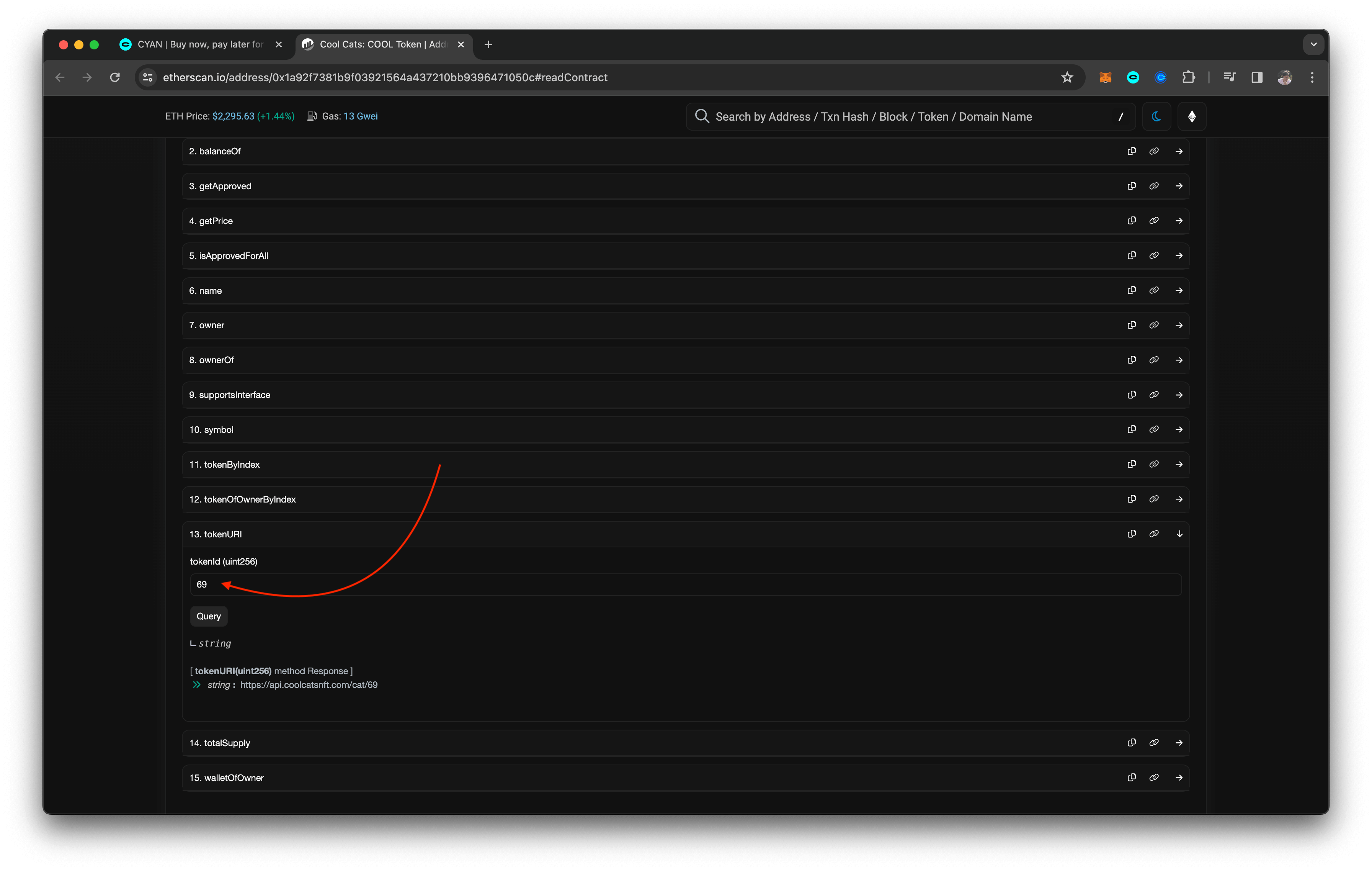
Some projects will host their images on IPFS, short for Interplanetary File System, which is a decentralized internet. However, while the assets are immutable when uploaded to IPFS, the integrity of the network is dependent on volunteer nodes continuing to run. The same criticism can be made on blockchain as well, so it can be argued once the image lives on IPFS it shares the same fate as a token on the Ethereum Virtual Machine, or EVM for short.
Overview of ERC-1155
Now that you have understood how an ERC-721 is structured, understanding ERC-1155 is simple.
Each token in an ERC-1155 contract has duplicates tied to that specific tokenID. This allows a collection to have unique assets, with each unique asset issuing multiple duplicates. This combines the non-fungibility of NFTs, while also enjoying the benefits of fungibility for each unique asset.
Going back to our Pokemon example, ERC-1155 is best understood with Pokemon cards. In the original franchise, there existed 151 individual Pokemons. There, each Pokemon had its unique trading cards designed for distribution.
We can think of each card being issued with a tokenID.
Now to sell the cards as products, each card was printed in quantities dictated by Nintendo to manage rarity and ensure a wide enough distribution to customers. This is the feature within ERC-1155 that allows each unique asset to be duplicated multiple times.
For example, a Pikachu card is unique but could have millions of prints worldwide. We are ignoring the condition for the sake of this example.
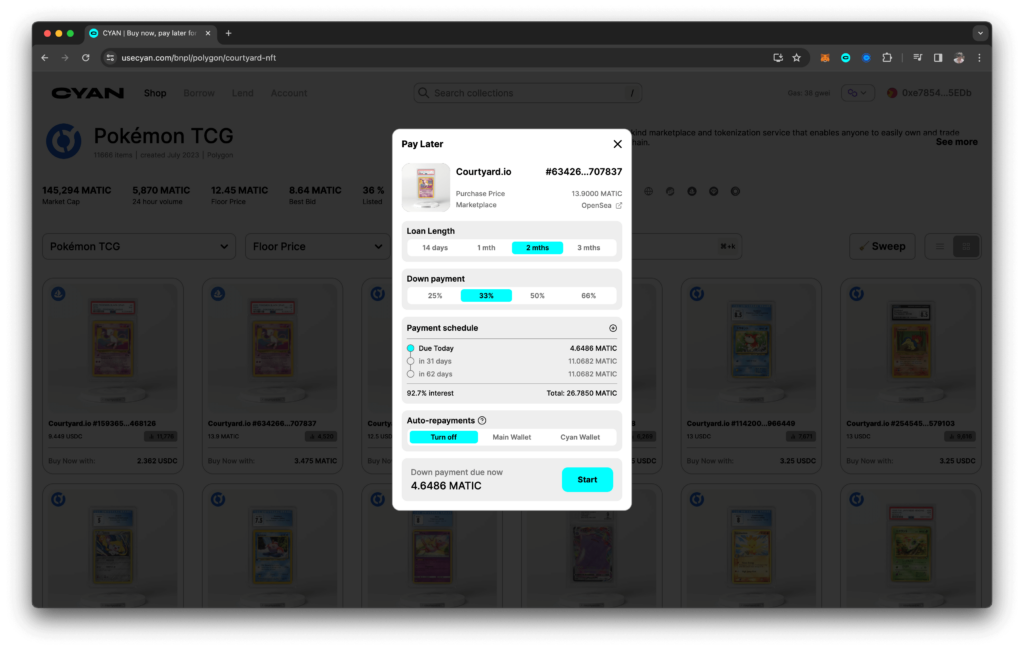
Who first issued ERC 1155 Non Fungible Tokens?
ERC-1155 was first designed and implemented by Sandbox. The Sandbox metaverse allows creators to issue assets with multiple copies. This way, a unique tree, hat, animal, or item can be created uniquely and duplicated to sell many copies to play in the game. Each copy does not have a unique identifier, so the contract keeps count of how many are in existence. When the maximum amount has been distributed, no one can own it anymore. For example, tokenID 69 may have 1,000 copies, and thus only 1,000 tokenID 69 NFTs will ever be distributed.
What’s New in ERC-1155
Since Sandbox introduced the ERC-1155 roughly four years ago, many projects and collections have adopted the contract standard.
Most recently, Courtyard.io has issued trading cards on the ERC-1155 standard. They currate real-life trading cards and issue NFTs for each card, so the standard works perfectly for their needs. They went one step further and have the contracts deployed on Polygon to manage gas fees.
EnjinX, which is a marketplace run by Enjin, is a gaming-focused marketplace with collections on the ERC-1155 standard. ERC-1155 works great for games, as each item is unique but has many duplicates. For first-person shooters, this may be pistols, helmets, clothing, avatars, and other assets. For racing games, this works well for each car, parts to modify the car, and assets used on a racecourse.
Is ERC-1155 better than ERC-721?
ERC-1155 offers several advantages over ERC-721, making it a more versatile and efficient choice in certain scenarios. Here are some key ways in which we can consider ERC-1155 as a better NFT standard:
Multi-Token Standard
Unlike ERC-721, which supports only non-fungible tokens (NFTs), ERC-1155 is a multi-token standard that can handle both fungible (like ERC-20) and non-fungible tokens within the same contract. This flexibility is particularly useful in applications like gaming, where a mix of fungible (e.g., coins, points) and non-fungible items (e.g., unique weapons, skins) is common.
Batch Transfers
ERC-1155 allows for batch transfers of multiple token types in a single transaction. This is more efficient and cost-effective than ERC-721, where each token must be transferred in a separate transaction. This feature reduces the transaction fees and on-chain bloat, making it more scalable for applications dealing with numerous assets.
Reduced Gas Costs
The ability to bundle transactions together in ERC-1155 leads to significant savings in gas costs, especially when minting, transferring, or managing multiple types of tokens.
Simplified Smart Contracts
Managing a variety of token types (both fungible and non-fungible) within a single smart contract simplifies the development process. In contrast, ERC-721 requires separate contracts for each type of non-fungible token, which can be more complex and resource-intensive.
Enhanced Functionality: ERC-1155 supports additional features like batch minting, batch burning, and semi-fungibility (where tokens can be both unique and interchangeable under certain conditions). This added functionality opens up more creative possibilities for developers.
Improved Interoperability: Since ERC-1155 can handle various token types, it offers better interoperability within the Ethereum ecosystem. This can facilitate more complex interactions between different applications and tokens.
While it’s hard to make a statement that ERC-1155 is better than ERC-721, it does offer many benefits over the latter. For developers, it’s crucial to understand which standard to use when deciding how to deploy a collection or project. As a user, it shouldn’t make a difference between the two types, but certainly, more users are familiar with the functionality of ERC-721.
Challenges with ERC-1155
While ERC-1155 offers significant advantages in terms of efficiency and flexibility, several factors can complicate its usage for both users and developers.
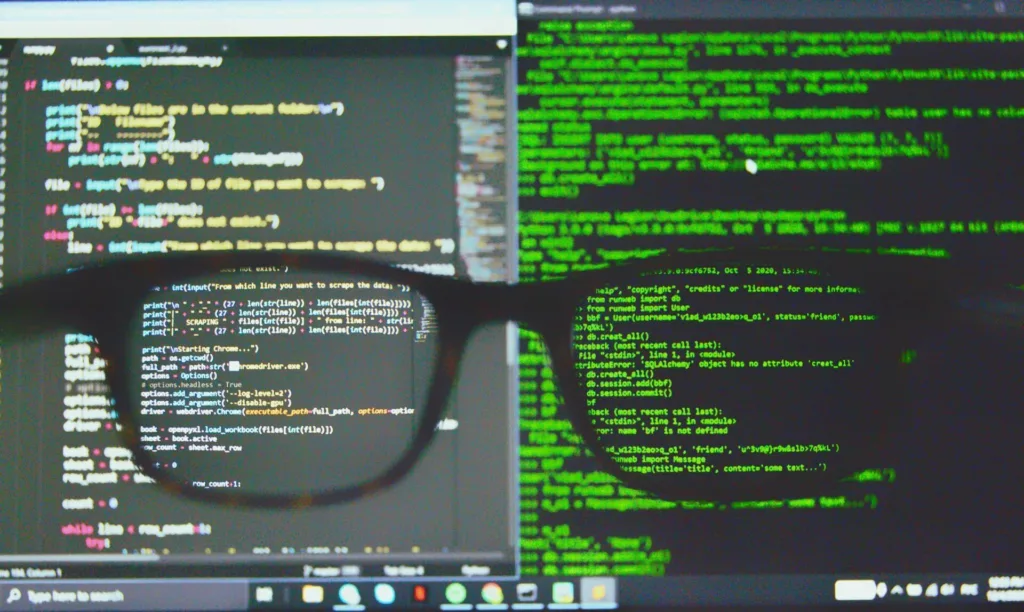
Complexity
The first and perhaps most daunting challenge is the inherent complexity of ERC-1155. The standard’s broad range of features, while beneficial, presents a steep learning curve, particularly for those who are new to the blockchain and NFT space. This complexity extends beyond just user understanding; it also encompasses the development of smart contracts. The sophisticated nature of ERC-1155 contracts demands a high level of expertise in contract development and security. Developers must be vigilant in ensuring the security and functionality of these contracts, as the increased complexity could potentially lead to bugs and vulnerabilities.
Lack of an Ecosystem
Another significant hurdle in the adoption of ERC-1155 is the current ecosystem support. Many existing wallets and marketplaces are primarily optimized for the more established ERC-721 standard. This lack of full support for ERC-1155’s capabilities can limit the accessibility and practical use of ERC-1155 tokens, particularly in key areas such as trading, transferring, and integrating with decentralized applications.
Lack of Education
Furthermore, there is a notable challenge in user education. The ERC-1155 standard introduces a unique approach where a single contract can manage a mix of fungible and non-fungible assets. Educating the user base about this functionality and its benefits is crucial for widespread adoption but is not without its difficulties. Overcoming this educational barrier is essential for the standard to gain traction and acceptance within the broader NFT and DeFi ecosystems.
Low Liquidity and Trading Volumes
Market acceptance and liquidity also pose challenges for ERC-1155. As a relatively newer standard, ERC-1155 faces hurdles in terms of recognition and trust within the NFT community, which has been more accustomed to ERC-721. This can affect the market dynamics, including the liquidity and acceptance of ERC-1155 tokens.
Not Suitable for Simple or Individual NFT Collections
Lastly, while ERC-1155 is known for its gas efficiency in batch transfers and large-scale operations, it’s important to recognize that this efficiency is not always consistent across all transaction types. In certain scenarios, particularly those involving simple or individual transactions, ERC-1155 may not offer significant gas cost advantages over ERC-721.
Cyan Supports ERC-1155 Tokens
While ERC-1155 may be the lesser-used standard for NFTs and in the industry as a whole, Cyan has made efforts to fully support the standard. This goes for both mainnet Ethereum and Polygon. Some projects Cyan supports already which use the ERC-1155 standard:
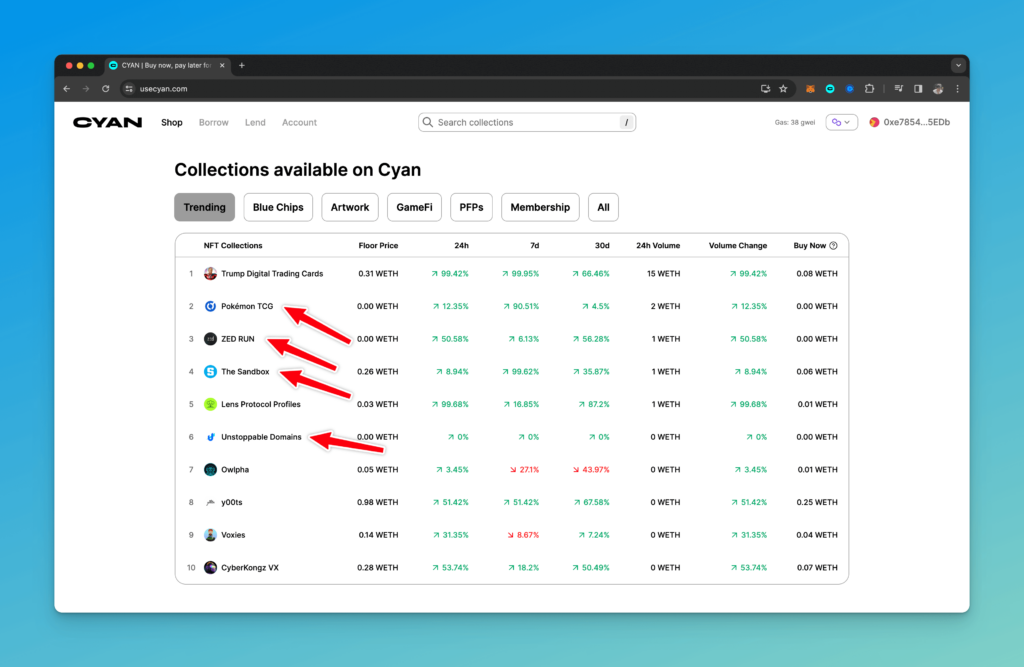
- Sandbox
- Courtyard (Pokemon TCG)
- ZED RUN
- Unstoppable Domains
Cyan is continuously adding projects almost every week. Check in often to see which projects using the ERC-1155 standard get added!

